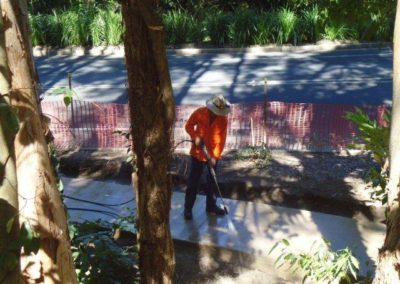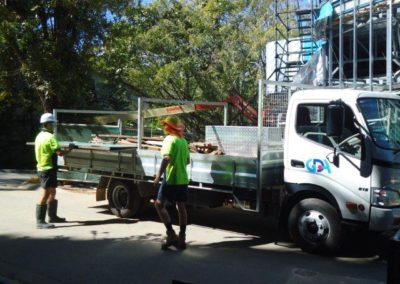Qut Outdoor Worker Sun Protection Project
The research team travelled to workplaces in the Far North, North West, Mackay and Darling Downs regions of Queensland. Workplaces were selected from the rural industry sector, building and construction sector, local government, and the public sector. For each workplace, a comprehensive sun protection plan was developed in consultation with workers and management teams. They contained a mix of strategies tailored to their specific needs and workplace environment. Implementation of the plan occurred over a 14 month period, and the research team provided ongoing support to workplaces through this time to ensure the successful implementation of strategies.
The field work component of this project was completed in September 2013 and each of the sun protection workplace plans were evaluated by looking at improvements in the workplace’s policy, environment and structures and changes in worker sun safe behaviour. The costs incurred by each workplace participating in the project were also examined.
At baseline:
• Just over half (57%) of the workplaces had an existing policy relating to sun safety
• 81% of workers were aware of a sun protection policy
• Only half (56%) of workers agreed it was enforced
• Only 6% of workers were offered incentives for sun safe behaviour
• 65% of workers had received training on use of personal protective equipment (PPE)
• 54% reported having received education and training on sun safety/skin cancer prevention
• 93% reported sunscreen as the most frequently supplied PPE
• However, sunscreen was reported as the least frequently used, with only 40% using it “usually or “always”.
Changes employed during intervention:
• 8 workplaces (57%) – amended/adopted sun-safe policies
• 6 workplaces (43%) – changes in natural or artificial shade
• 11 workplaces (79%) – changes in PPE
• 5 workplaces (36%) – changes in window tinting
• 5 workplaces (36%) – changes to work schedule outside peak UV times (10am to 3pm)
At baseline:
• Just over half (57%) of the workplaces had an existing policy relating to sun safety
• 81% of workers were aware of a sun protection policy
• Only half (56%) of workers agreed it was enforced
• Only 6% of workers were offered incentives for sun safe behaviour
• 65% of workers had received training on use of personal protective equipment (PPE)
• 54% reported having received education and training on sun safety/skin cancer prevention
• 93% reported sunscreen as the most frequently supplied PPE
• However, sunscreen was reported as the least frequently used, with only 40% using it “usually or “always”.
Changes employed during intervention:
• 8 workplaces (57%) – amended/adopted sun-safe policies
• 6 workplaces (43%) – changes in natural or artificial shade
• 11 workplaces (79%) – changes in PPE
• 5 workplaces (36%) – changes in window tinting
• 5 workplaces (36%) – changes to work schedule outside peak UV times (10am to 3pm)


